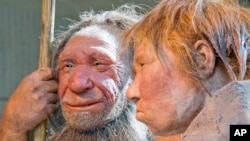The human nose, in all its glorious forms, is one of our most distinctive characteristics, whether big, little, broad, narrow or somewhere in between.
Scientists are now sniffing out some of the factors that drove the evolution of the human proboscis.
Researchers said on Thursday a study using three-dimensional images of hundreds of people of East Asian, South Asian, West African and Northern European ancestry indicated local climate, specifically temperature and humidity, played a key role in determining the nose's shape.
Wider noses were more common in people from warm and humid climates, they found. Narrower noses were more common in those from cold and dry climates.
The nose's primary functions are breathing and smelling. It has mucous and blood capillaries inside that help warm and humidify inhaled air before it reaches more sensitive parts of the respiratory tract.
Having narrower nasal airways might help increase contact between inhaled air and tissues inside the nose carrying moisture and heat, said Penn State University geneticist Arslan Zaidi, lead author of the study published in the journal PLOS Genetics.
"This might have offered an advantage in colder climates. In warmer climates, the flip side was probably true," Zaidi said.
Our species appeared in Africa about 200,000 years ago and later migrated to other parts of the world. The researchers said people with narrower nostrils may have done better and produced more offspring than those with wider nostrils in colder, drier locales, driving a gradual decline in nose width.
The finding generally supports what's called Thomson's rule, formulated by British anatomist and anthropologist Arthur Thomson (1858-1935), that people from cold, dry climates tend to have longer and thinner noses than people from warm, humid climates.
Zaidi said most previous evidence regarding Thomson's rule came from skull measurements, while this study expanded on that by analyzing external nose shape.
The researchers studied nose width, nostril width, nose height, length of the nose ridge, nose tip protrusion, external surface area and total nostril area.
"What we have tested is a very simple hypothesis about the nose, which likely had a very complex evolutionary history. There's a lot we don't know," Zaidi said, citing the need to probe genes underlying nose shape.
"One can imagine how cultural differences in attractiveness could have led to some of the differences in nose shape between populations. For example, were wider noses considered more attractive in some populations relative to others?"





